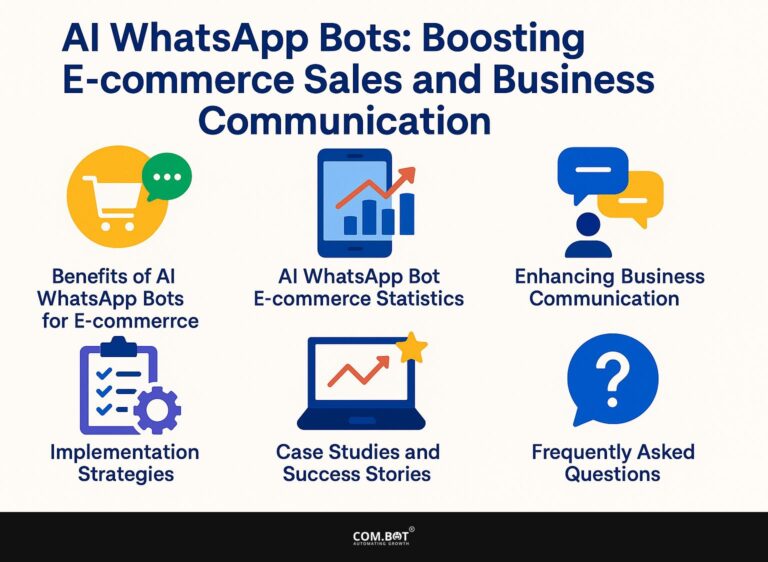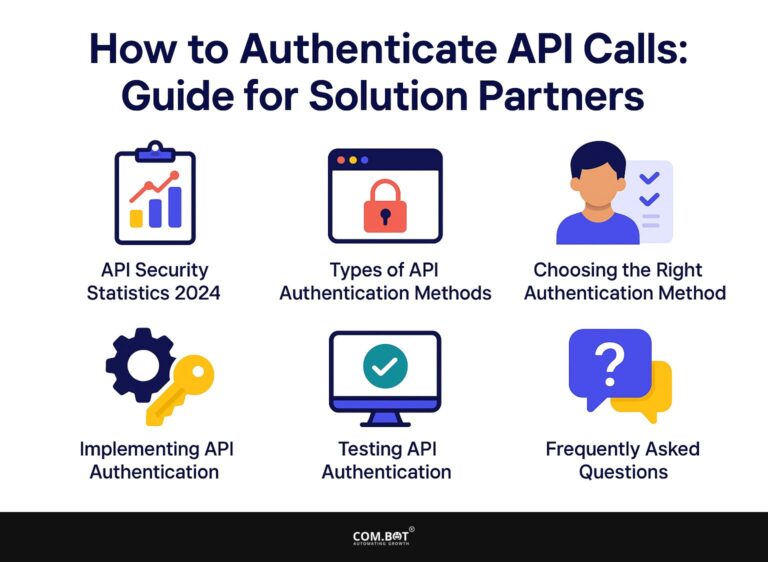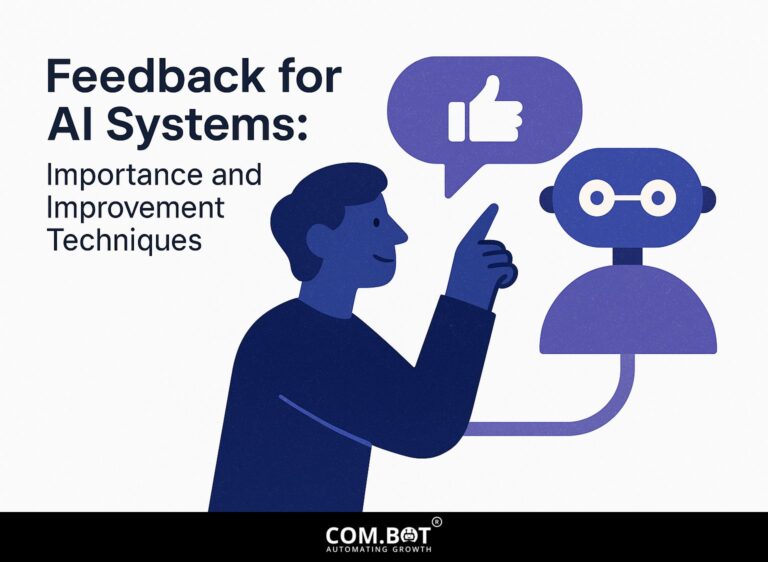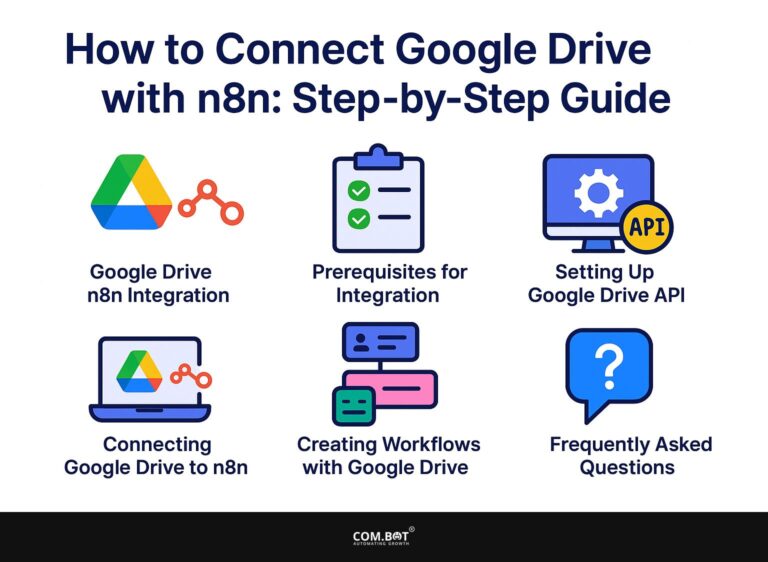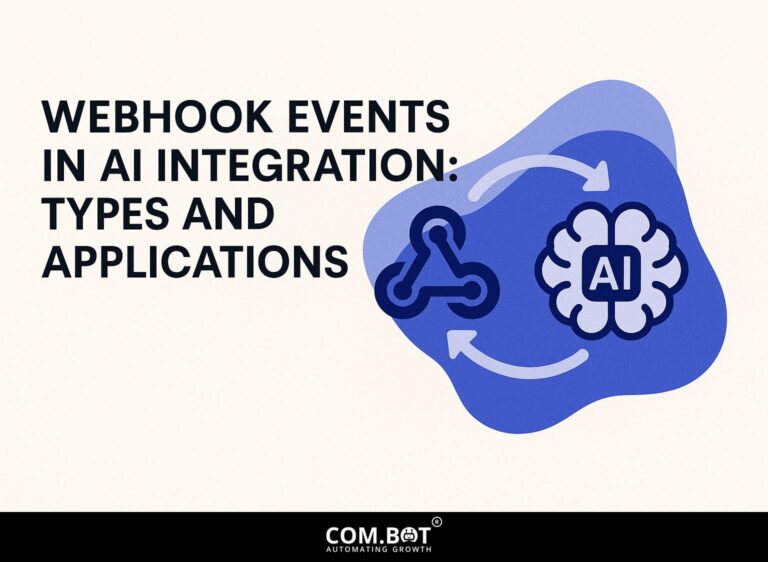Generative AI in WhatsApp: Capabilities and Applications
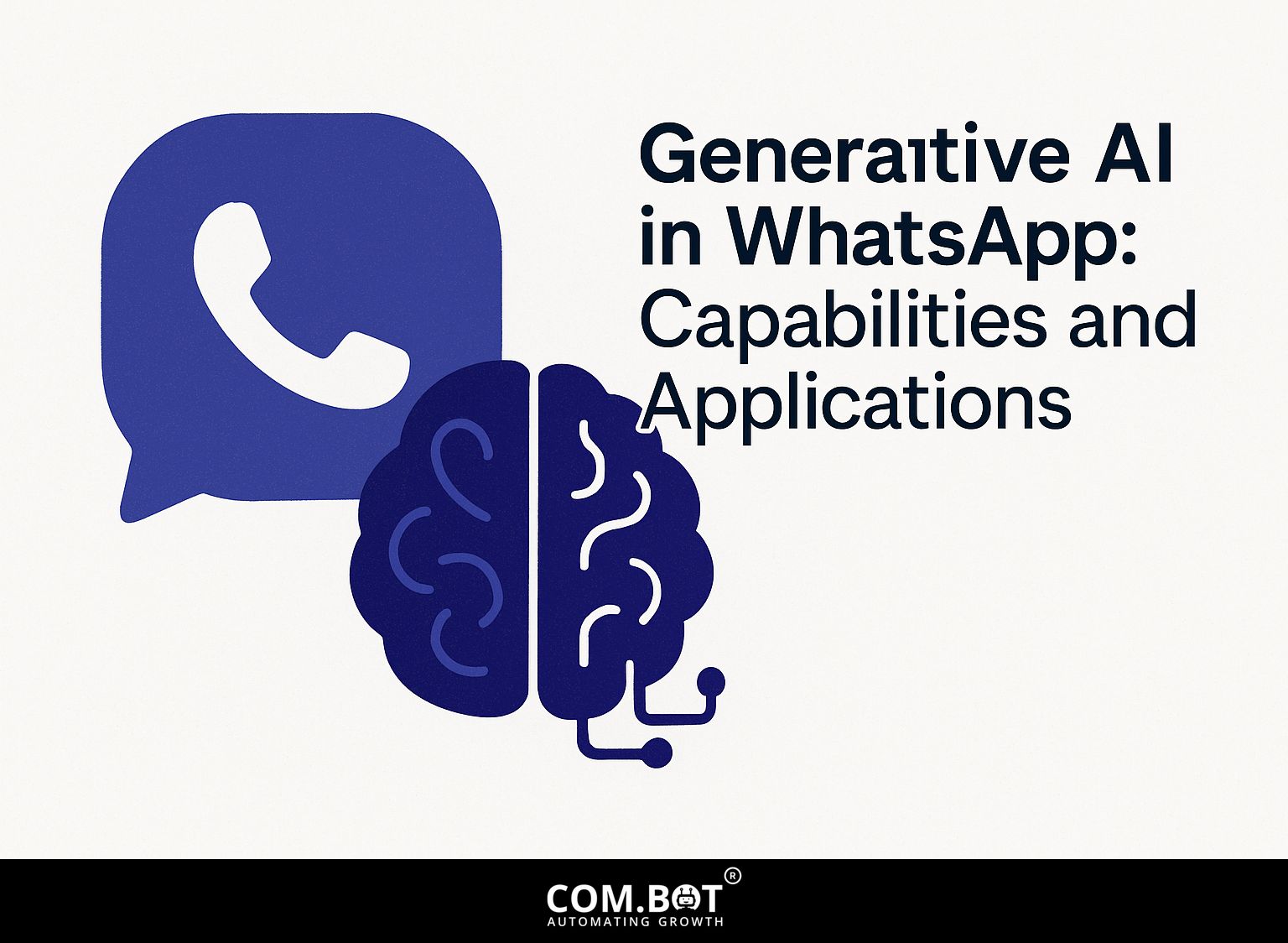
Using generative AI in WhatsApp Business greatly improves customer experience while keeping data private. By using tools like Amazon Connect and Amazon Q, businesses can improve communication through automated replies and custom interactions. This article looks at the uses and features of generative AI in WhatsApp, showing how it changes customer support and personal use, leading to better and more effective communication.
Key Takeaways:
- Generative AI in WhatsApp changes how we chat by using natural language processing to make conversations smoother and more customized.
- Businesses can benefit from generative AI in WhatsApp through customer support automation and targeted marketing messages.
- On a personal level, generative AI in WhatsApp can help with creating content and translating languages, but you should think about privacy issues and possible bias.
- 1 Capabilities of Generative AI in WhatsApp
- 2 Generative AI and WhatsApp Usage Statistics (2025)
- 3 Applications in Business
- 4 Applications in Personal Use
- 5 Ethical Considerations
- 6 Future Trends
- 7 Frequently Asked Questions
- 7.1 1. What is Generative AI and how is it used in WhatsApp?
- 7.2 2. What are the capabilities of Generative AI in WhatsApp?
- 7.3 3. How does Generative AI work in WhatsApp to generate predictive replies?
- 7.4 4. Can Generative AI in WhatsApp generate original content, such as stickers and GIFs?
- 7.5 5. What are some real-life applications of Generative AI in WhatsApp?
- 7.6 6. Is Generative AI in WhatsApp constantly learning and improving?
1. Definition and Overview
Generative AI uses algorithms to create text, images, or other media based on what users input. It can be used in applications like chatbots and content creation tools.
OpenAI’s GPT-4 is a strong example of generative AI, creating text that resembles human writing and performs well in different situations. For example, it can be used in customer support chatbots to create replies that fit the situation, improving how users feel about the interaction.
Content marketers use tools like Copy.ai or Jasper.ai to write blog posts and social media content fast. These applications make content creation easier and keep a consistent brand voice on all platforms. By using these tools in daily processes, businesses can improve productivity and creativity in creating content.
2. Importance in Communication
Using AI to create responses in chat platforms makes user interactions better by giving quick replies and personalized experiences based on personal preferences.
For instance, utilizing AI-driven platforms like Drift or Intercom allows businesses to respond to inquiries instantly, significantly reducing response time. Companies using these tools say they have seen a 70% rise in customer happiness because of better customization.
Messaging tools like WhatsApp Business enable customized marketing plans, helping brands engage with users based on their previous interactions. Using these tools improves communication, builds better customer relationships, and increases loyalty and retention.
Capabilities of Generative AI in WhatsApp
WhatsApp Business uses AI to make customer interactions better through natural language processing and chatbot features.
Generative AI and WhatsApp Usage Statistics (2025)
For businesses keen on leveraging AI chatbots, exploring how to deploy and test these technologies successfully is crucial. This involves understanding the key steps and strategies that ensure effective implementation, especially within US enterprises.
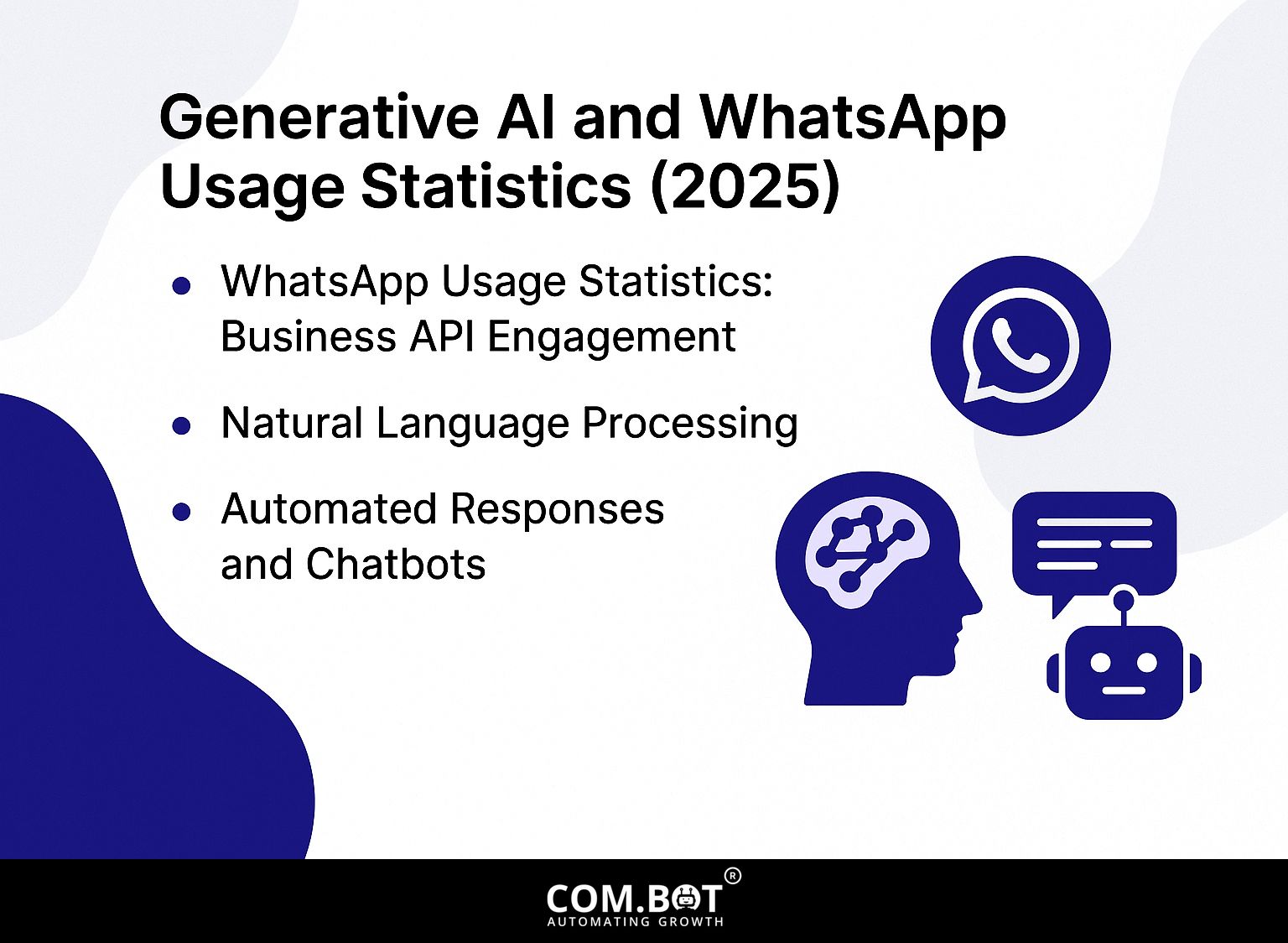
1. WhatsApp Usage Statistics: Business API Engagement
The Generative AI and WhatsApp Usage Statistics (2025) highlights the growing reliance on WhatsApp as a business tool, particularly through its Business API. This information shows how businesses, particularly small to medium-sized ones and large companies, use WhatsApp for talking to customers and keeping them interested.
WhatsApp Usage Statistics indicates that 84% of small and medium-sized businesses use WhatsApp for business purposes.. The high percentage highlights WhatsApp’s success as a tool for small businesses to improve customer service, advertise, and make direct sales. Its broad availability, simple operation, and worldwide access make it a good choice for small and medium-sized businesses trying to keep a solid presence and connect with customers effectively.
- The WhatsApp Business API is actively used by 1260 enterprises, reflecting its significance as a tool for larger companies. The API lets businesses automatically reply to messages, handle customer interactions, and connect with CRM systems, improving how they work and how customers feel about their service. Businesses gain from customized solutions that handle large amounts of communications and keep interactions personal.
These statistics show how important WhatsApp is for business communications today. Its widespread adoption among SMBs and enterprises signals a shift towards more instant and direct customer engagement methods. As businesses look for efficient and scalable ways to communicate, WhatsApp’s Business API provides a strong platform that meets these needs.
The data illustrates the potential for further integration of Generative AI technologies with platforms like WhatsApp, offering advanced features such as customized messaging, predictive analysis, and automated workflows. This could improve how users interact with the app and how it works in business settings, making WhatsApp a stronger option for business communication.
2. Natural Language Processing
Natural Language Processing (NLP) in WhatsApp enables bots to understand and respond to user inquiries effectively, reducing response times to under 2 seconds.
To apply NLP in WhatsApp, tools like Google’s Dialogflow can be necessary. Start by creating a Dialogflow agent, which allows you to define intents, or the various user inquiries.
For instance, if users often ask about store hours, set up an intent specifically for that query. Collect data securely by encrypting conversations and ensuring compliance with GDPR.
Connect Dialogflow with your backend systems using webhooks. This allows the bot to use the latest information and give correct answers. This improves user experience and creates trust through careful data management. See also: Building Intent-Based Chatbots: Benefits and Applications, which dives deeper into the advantages of structuring chatbots around user intents.
3. Automated Responses and Chatbots
Automated chatbot responses help businesses by handling up to 80% of common questions, letting human agents deal with more complex problems. To implement chatbots on WhatsApp, consider using platforms like Amazon Connect, which offers seamless integration.
Begin by defining the types of inquiries your chatbot will handle, such as order status or FAQs. Set up conversation routes in the Amazon Connect interface to help users work quickly. Metrics show that businesses can reduce response times from hours to just seconds.
For instance, a retail company reported a 50% increase in customer satisfaction and a 30% decrease in support costs after implementing this system.
Applications in Business
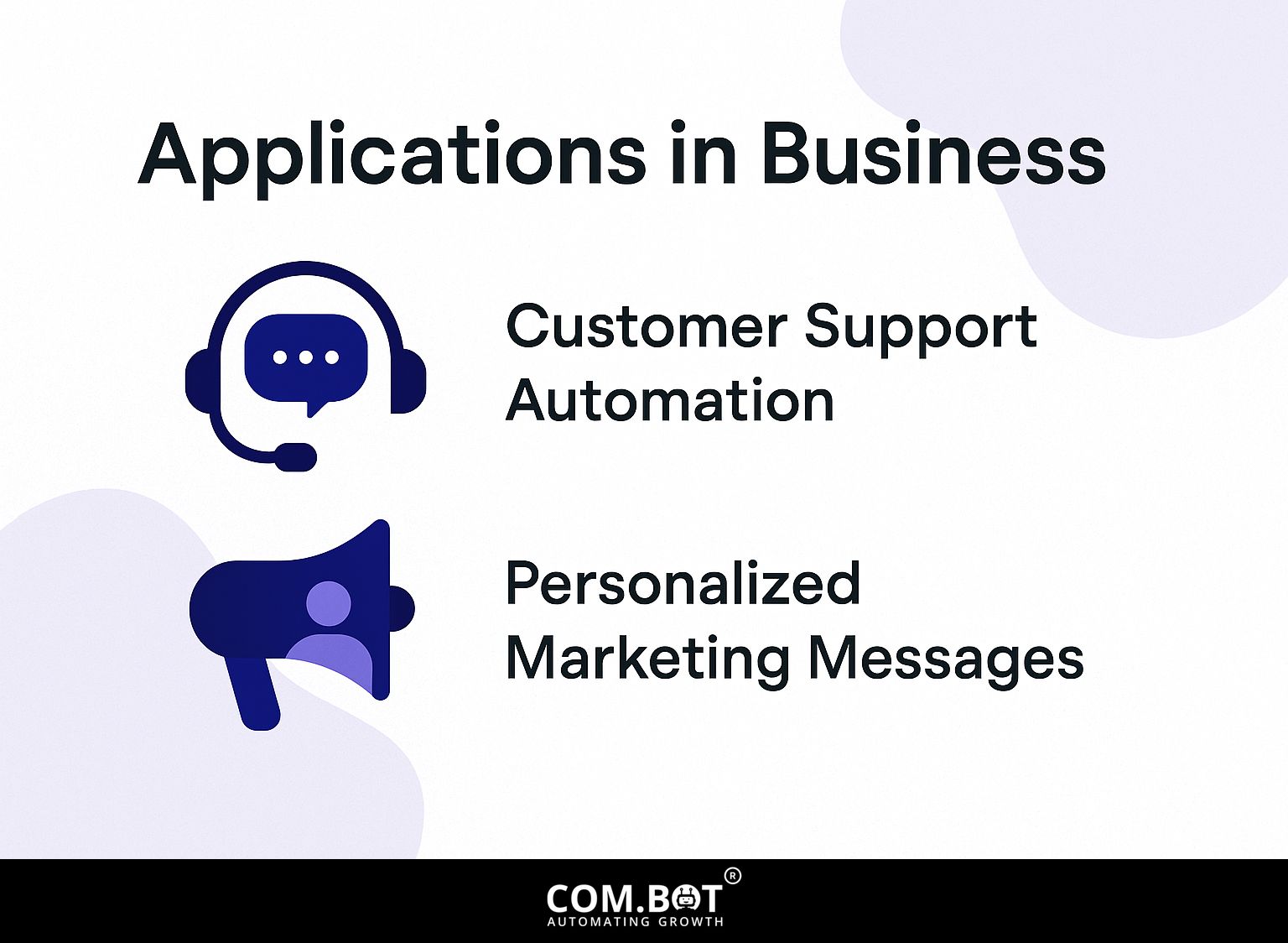
Businesses use generative AI to make customer support processes more efficient and tailor marketing campaigns to individual needs, greatly enhancing how they interact with customers. Leveraging AI bots for customer support can significantly boost satisfaction levels, as discussed in our recent analysis of AI Bots for Customer Support: Benefits and Satisfaction.
1. Customer Support Automation
Using AI for customer support helps companies offer help at any time of the day or night, resulting in a 30% rise in customer satisfaction ratings.
Using tools like Salesforce Service Cloud can greatly improve support activities. Meta used this system to make answering questions faster, cutting the average time to solve issues from 24 hours to just 2 hours.
By integrating AI chatbots, companies can anticipate customer needs and provide immediate solutions to common issues. Tracking metrics such as response times and customer satisfaction scores can help identify areas for further improvement. This method uses data to keep customer support aligned with what users want.
2. Personalized Marketing Messages
Generative AI helps businesses make custom marketing messages by using customer data, leading to conversion rates that can increase by up to 40%. With tools like Swiftsell, businesses can analyze customer actions and preferences.
A retail brand used Swiftsell to categorize their customers and create targeted marketing plans with product recommendations based on previous purchases. This customized method resulted in a 30% rise in open rates and a 25% increase in sales.
Another example could involve a travel agency employing AI to send targeted promotions for vacation packages that align with customers’ travel history, resulting in higher engagement and bookings. Implementing such data-driven strategies makes marketing efforts more efficient and impactful.
Applications in Personal Use
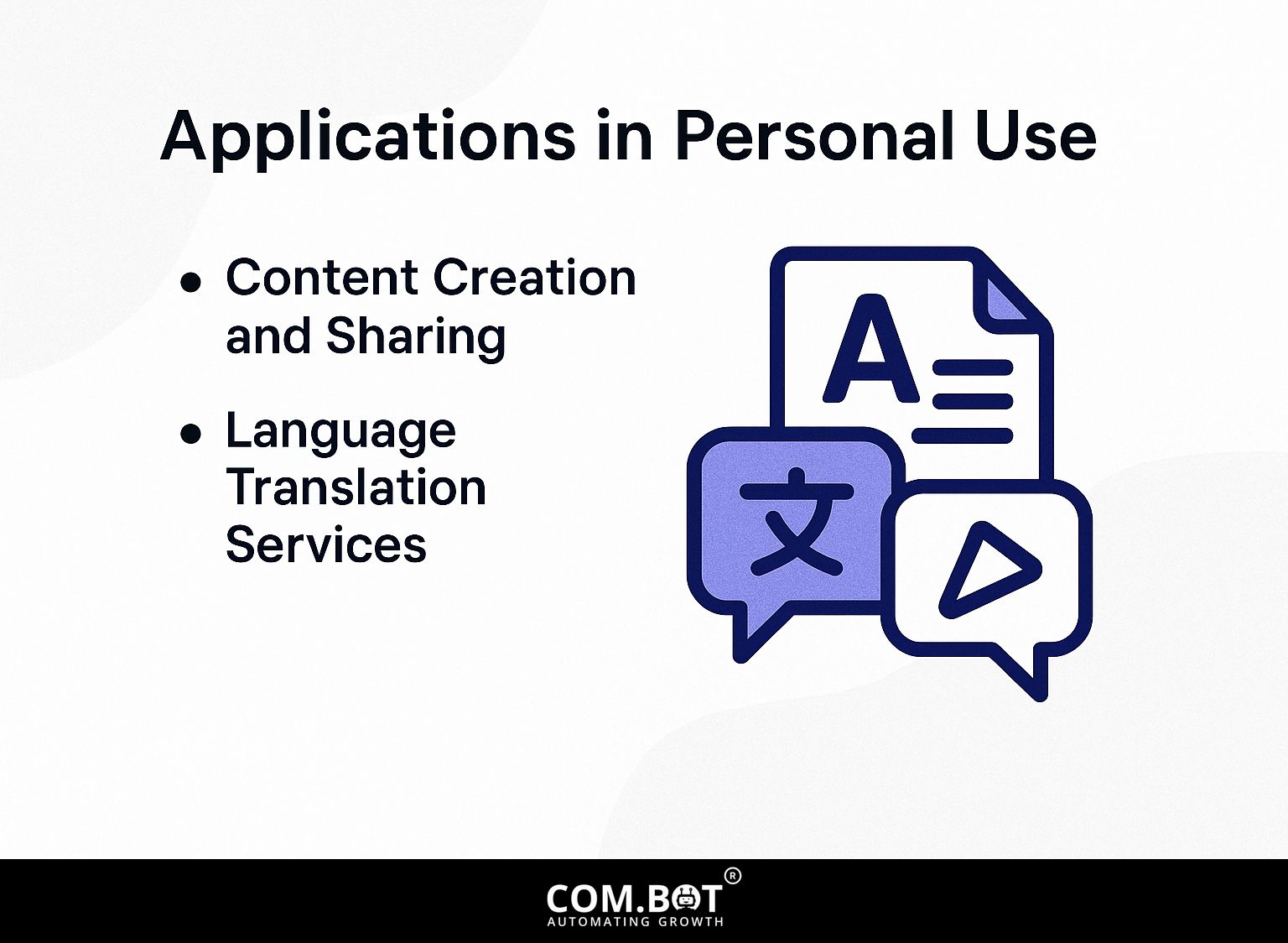
Generative AI is improving personal tools by allowing quick content creation and immediate language translations, greatly enhancing how users interact with them.
1. Content Creation and Sharing
AI tools like OpenAI’s ChatGPT can generate engaging content in minutes, allowing users to produce high-quality articles or social media posts effortlessly. To use AI for creating content, try using tools like ChatGPT, which costs about $20 per month.
People have managed to write blog posts that get thousands of shares by giving the AI particular topics and keywords that suit their audience. For instance, a travel blogger used ChatGPT to generate itineraries, resulting in a 30% increase in engagement on their social platforms.
By using AI with content planning tools like Trello or Notion, you can simplify the process and speed it up.
2. Language Translation Services
Generative AI makes it easier to translate languages instantly, allowing people to speak with each other in more than 100 languages with about 90% accuracy.
Apps like Google Translate use neural networks to quickly analyze and translate text, offering translations that fit the context. It is important to think about data privacy; do not enter sensitive information into these tools without knowing the risks.
Users can safeguard their data through measures such as avoiding the use of personal identifiers and exploring on-premises solutions for translation when confidentiality is paramount. This mix of speed and safety allows for clear and secure communication across different languages.
Ethical Considerations
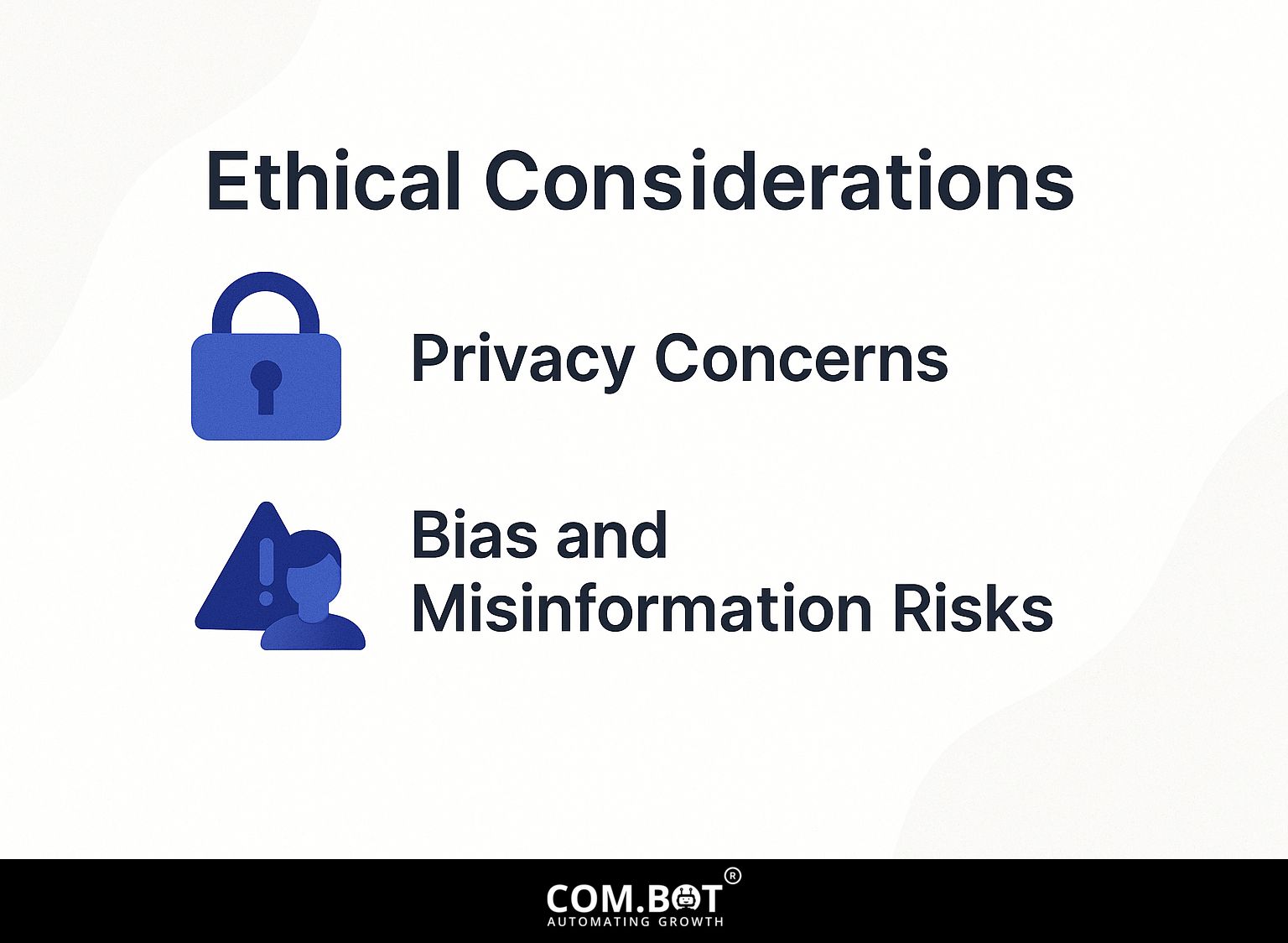
The growth of generative AI presents important ethical issues, especially about privacy, bias, and false information, which organizations need to handle actively. One of our most insightful case studies delves into AI bias in content moderation, offering examples and mitigation strategies that can guide companies in navigating these challenges.
1. Privacy Concerns
One of the foremost privacy concerns is the handling of sensitive data, with compliance regulations like GDPR necessitating stringent data protection measures.
Businesses can follow different methods to meet compliance standards.
- First, arrange regular independent reviews to check how data is managed and find any weak points. Tools like OneTrust make managing compliance easier by offering templates and tracking tools.
- Second, implement strong encryption methods for data storage and transmission, safeguarding sensitive information from breaches. Having regular training sessions for employees on data privacy practices is important so everyone knows their responsibilities for following the rules.
By putting these steps into practice, businesses can build a culture focused on data security and greatly reduce privacy risks.
2. Bias and Misinformation Risks
Generative AI systems can unintentionally continue bias and misinformation, emphasizing the need for thorough testing and supervision to reduce these dangers. To solve these issues, it’s important to use varied training data that includes many different viewpoints.
Utilizing tools like Google’s TensorFlow for developing models and the AI Fairness 360 toolkit can help identify and reduce bias during the training phase.
Having people check the work, like doing regular reviews with different teams, makes sure the results are checked for unfair trends.
Setting up a feedback system helps ongoing progress, letting developers adjust AI systems to match real-world changes and societal expectations.
Future Trends
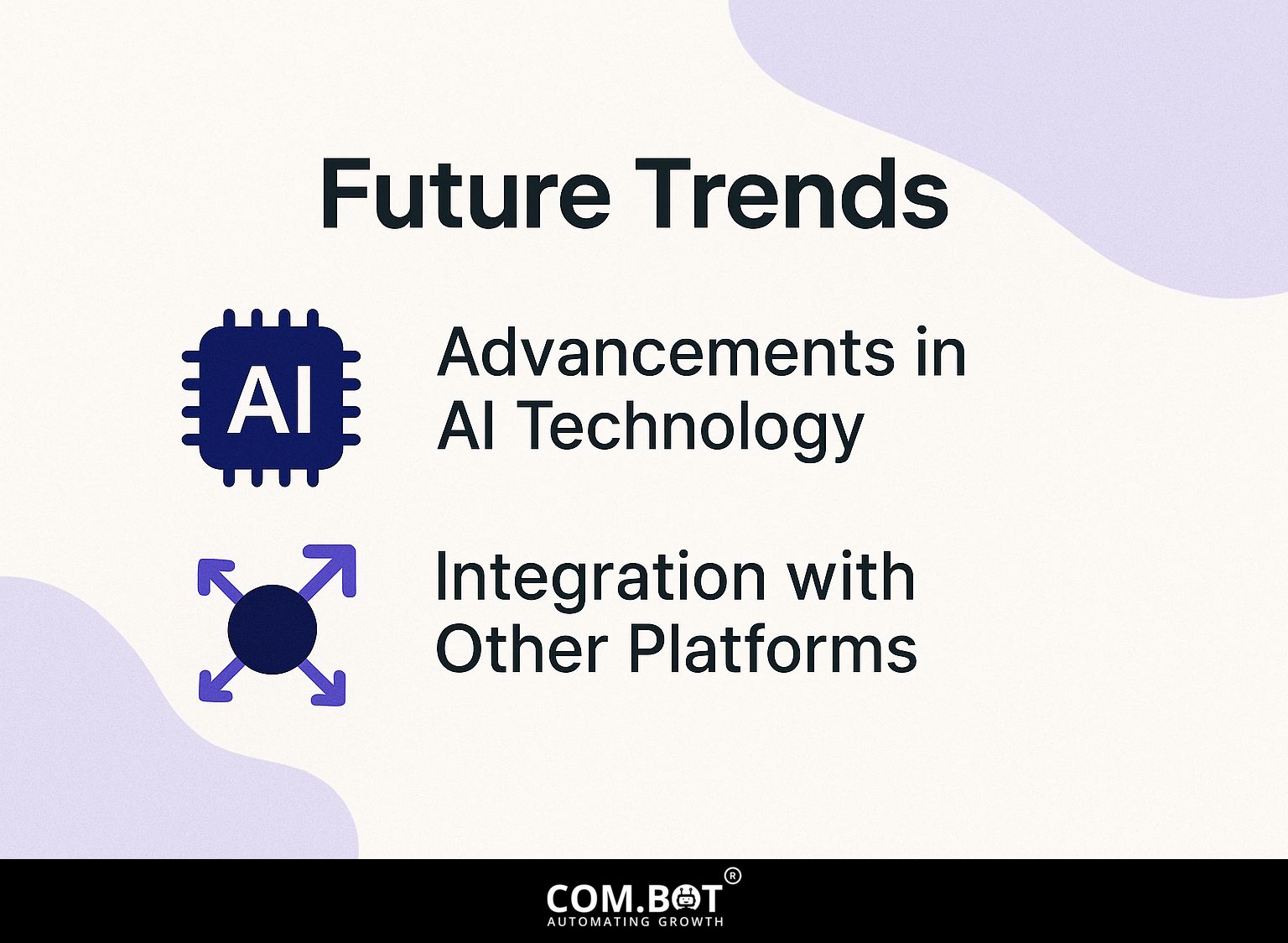
Generative AI is set to grow quickly, with more use across different platforms and better data analysis tools leading to new developments (those curious about practical applications might appreciate our Infobip AI Hub: Functionality and Use Cases).
1. Advancements in AI Technology
Emerging AI technologies are advancing rapidly, with improvements in AI processing speeds and capabilities enhancing operational efficiency in various sectors.
Quantum computing is especially useful because it can handle large amounts of data very quickly. Companies like IBM are at the forefront, integrating quantum algorithms into AI applications.
For example, IBM’s Quantum Experience lets developers work with AI and quantum computing at the same time, improving problem-solving tasks in industries such as finance and healthcare. Google is using its Sycamore processor to solve difficult calculation problems much faster. These improvements promise to greatly change generative AI, allowing for quicker and more advanced results.
2. Integration with Other Platforms
Connecting generative AI with platforms like WhatsApp and Salesforce will change user communication, enhancing support across various channels and gaining a better grasp of customer needs.
A retail company used generative AI in Salesforce to study customer conversations from WhatsApp chats. By implementing natural language processing tools, they improved response accuracy by 30% and increased customer satisfaction scores.
Another example is a service provider using AI chatbots integrated with WhatsApp to handle FAQs, resulting in a 40% reduction in workload for human agents.
These integrations make communication easier and give useful information, helping businesses to adjust their strategies successfully.
Frequently Asked Questions
1. What is Generative AI and how is it used in WhatsApp?
Generative AI is a type of artificial intelligence that can create and generate new content, such as text, images, and videos. In WhatsApp, AI helps suggest replies, make stickers and GIFs, and create custom chat backgrounds for users.
2. What are the capabilities of Generative AI in WhatsApp?
Some features of Generative AI in WhatsApp are making custom sticker and GIF suggestions, designing chat backgrounds based on user likes, and offering reply suggestions based on the conversation.
3. How does Generative AI work in WhatsApp to generate predictive replies?
Generative AI in WhatsApp analyzes the chat and user communication to provide replies that suit the discussion and are personalized for the user. The AI slowly understands how the user writes messages, which makes responses more accurate and authentic.
4. Can Generative AI in WhatsApp generate original content, such as stickers and GIFs?
Yes, Generative AI in WhatsApp has the ability to generate original stickers and GIFs based on the user’s preferences and interests. The AI uses image and text recognition, along with machine learning, to make special content just for you.
5. What are some real-life applications of Generative AI in WhatsApp?
Real-life uses of Generative AI in WhatsApp include making custom chat backgrounds, recommending suitable replies quickly, and making one-of-a-kind stickers and GIFs for people to use in their chats.
6. Is Generative AI in WhatsApp constantly learning and improving?
Yes, Generative AI in WhatsApp is constantly learning and improving through user interactions and feedback. The AI learns from the user’s way of messaging and what they like, improving its suggestions and created content to better match the user over time.
